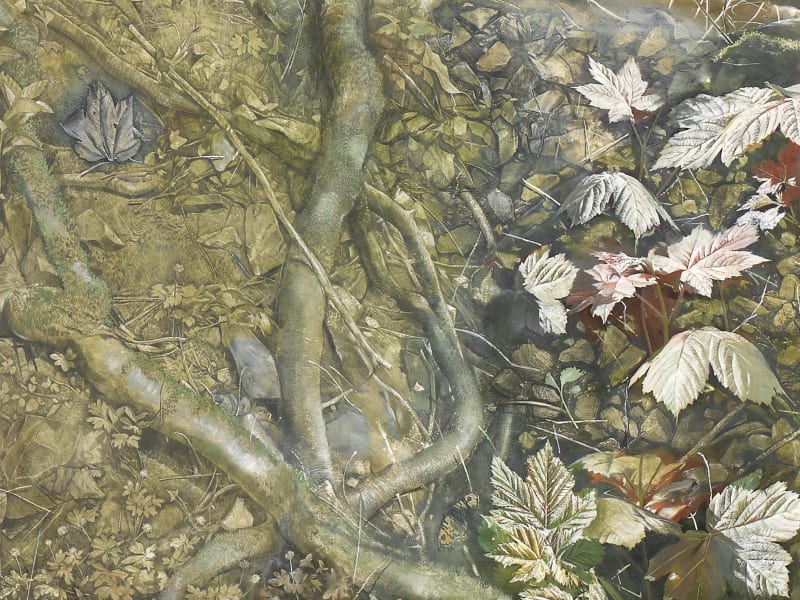Satisfactory pictures of trees are rare. Drawing them is the most difficult task that an artist is called upon to do. No picture, indeed no photograph, of a tree can ever be naturalistic: life is not long enough to depict all the complexity. A tree artist must, inevitably, be a caricaturist, selecting the details that are distinctive and leaving out those that are not. Unfortunately even famous artists have a knack of selecting the undistinctive details and leaving out those parts – the irregular bits and the dead bits – that express the character of trees.
Mary Anne Aytoun Ellis is probably the most distinguished living artist of trees and woods. She begins with the understanding (mostly forgotten since Arthur Rackham) that trees are not standardized objects but individuals, every one different from every other. Her landscapes show the Sussex Downs in the fleeting majesty of extremes of weather: trees and hills are lit by the mysterious glows of sunset and sunrise and moonlight; the ghostly outlines of deer and sheep loom trough the mists. She also paints close-ups of tree-bases and roots and the banks of holloways in the meticulous detail not seen since the Pre-Raphaelites: not just individual trees, but lenticels and dead boughs and recognizable mosses and (female) dog’s-mercury, down to the sharp flints that everyone who has wandered in the chalklands will know.
